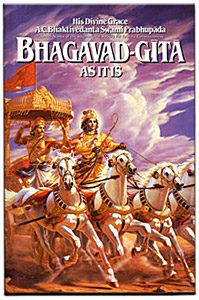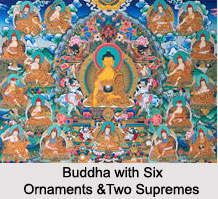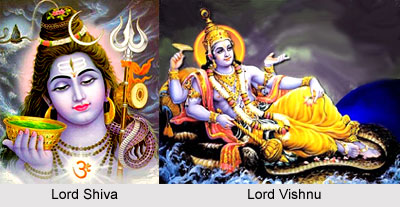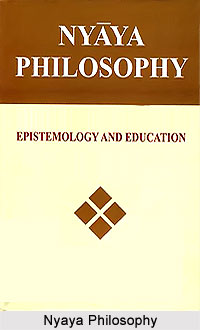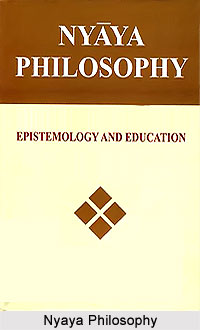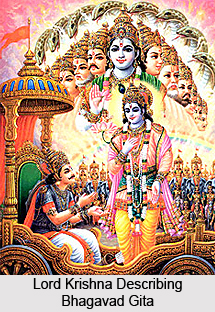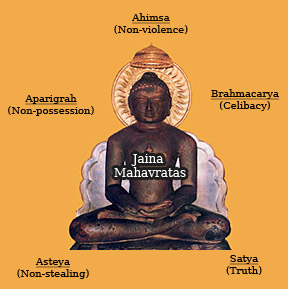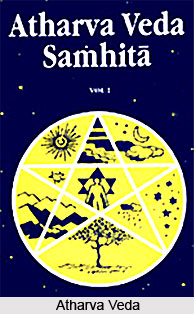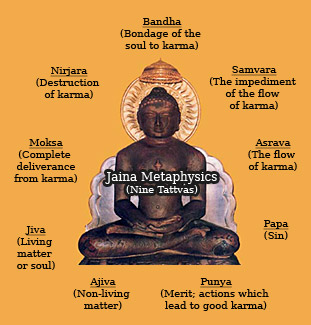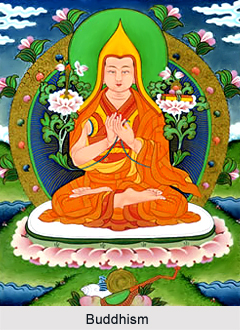 The Vaibhasikas school of thought considered the language of the other schools to be absurd or viruddhabhasa. The Vaibhasikas are identified with the Sarvastivadins. It gained its eminence in the third century after the Mahaparinibbana of Buddha. The other reason can be because they are attached to the Vibhasa or the commentary on the Abhidharma. As the Vaibhasikas were realists, they denied the acquiescence of the Sutrantrikas who were the believers of the present and denied the existence of past and future. The denial of the existence of the external cosmic existence bars the inference and hinders the derivation of `Vypti` or universal proposition. The philosophy of Vaibhasika comprises the involvement of the seven Abhidharma treatises that are Jnanaprasthanasutra of Arya Katyayaniputra, Sangitiparyaya of Mahakausthila, Prakaranapada of Sthavira Vasumitra, Vijnanakaya of Sthavira Devasarma, Dhatukaya of Purna, Dharmaskandha of Arya Sariputra and Prajnaptisastra of Arya Maudgalyayana. The Sarvastivadins are the believers of seventy-five dharmas that have its ramifications in Pure (anasrava) and Impure (sasrava) dharmas.
The Vaibhasikas school of thought considered the language of the other schools to be absurd or viruddhabhasa. The Vaibhasikas are identified with the Sarvastivadins. It gained its eminence in the third century after the Mahaparinibbana of Buddha. The other reason can be because they are attached to the Vibhasa or the commentary on the Abhidharma. As the Vaibhasikas were realists, they denied the acquiescence of the Sutrantrikas who were the believers of the present and denied the existence of past and future. The denial of the existence of the external cosmic existence bars the inference and hinders the derivation of `Vypti` or universal proposition. The philosophy of Vaibhasika comprises the involvement of the seven Abhidharma treatises that are Jnanaprasthanasutra of Arya Katyayaniputra, Sangitiparyaya of Mahakausthila, Prakaranapada of Sthavira Vasumitra, Vijnanakaya of Sthavira Devasarma, Dhatukaya of Purna, Dharmaskandha of Arya Sariputra and Prajnaptisastra of Arya Maudgalyayana. The Sarvastivadins are the believers of seventy-five dharmas that have its ramifications in Pure (anasrava) and Impure (sasrava) dharmas.
The concept of the inner world of ideas and the outer world of objects are separate from one another. The reality and the illumination carry separate dimensions in the real life. The Vaibhasikas approves the independent presence of nature as well as admires the existence of the natural and the illuminative entity. It relies on the consciousness of mind about the objects and the awareness or consciousness of objects is considered as discovery.
According to Vaibhasikas the permanent substances are not the transitory phenomena. Those are the elements which underlie the permanent substances. Sar-vastivadins maintain the eternal existence of the nominal counterparts of the five skandhas or elements of things. They avoid the difficulty of causation. According to them cause and effect refer to two phases of one thing. Water is the common substance of ice and steam. The phases are momentary, but the substratum is permanent. As per the view of Aryadeva:" The cause never perishes, but only changes its name when it becomes an effect having changed its state. For example, clay becomes the jar having changed its state, and in this case the name clay is lost and the name jar arises." They have but a brief duration like a lightning flash. The atoms are immediately separated and their aggregation is but instantaneous. The Vaibhasikas believe that "Things exist for four moments, those of production, existence, decay and death" It is not only the perception that makes them into objects but the objects have an independent existence. It is accepted by both the Vaibhasikas and the Sautrantikas that the permanent reality of the underlying elements or their extra-mental existence. No consideration has been shown to the relation between the underlying reality and the phenomenal manifestations. The Vaibhasikas and the Sautrantikas gives importance to the reality of an outer world. They consider the objects as the `bahya`, or the external, and the `abhyantara`, or the internal. Under the former the concept of `bhiita`, or the elements, and `bhautika`, or objects belonging to the elements are regarded. Under the latter they estimate `citta`, or intelligence, and `caitta`, or those belonging to intelligence.
Among the five `tattvas` , four elements that are earth , water, fire and air are considered as the basic elements . The fifth element, `akasa`, is not recognised. The accumulation of the ultimate atoms results the external objects. Both the Vaibhasikas and the Sautrantikas accept the atomic theory. The end product of all objects is the atoms. The Vaibhasikas believes that the atom has six sides. The structure of the atom can not be divided and are realized in a mass, in an assembled order.
According to the view of Vasubandhu an atom is the smallest particle of `rupa`. Atom is assumed as indivisible, intangible, invisible, inaudible, that cannot be tasted and that cannot be analysed. Though the indefinite atomic aggregations are accepted by the Vaibhasikas and the Sautrantikas, the concept of double or triple atoms are not accepted by them. The primary elements are conglomerated as the compound substances. (Compound substances are composites of primary elements.). The human bodies, the objects of sense are the combination of atoms. Quite ideally therefore the Vaibhasikas deduce that material things which offer resistance to sense-organs are the collections of the fourfold substrata of rupa, colour, smell, taste and touch. The atom possesses this fourfold quality and defies analysis. The combination reveals the perception of the `paramanus` or the atoms. `Anu `which is the combination of `paramanus` is the perceptible atomic unit. The atoms possess the qualities of air, earth, water and fire and hold equal qualities. The earth domineers of hard elements, the water element domineers of liquid stream, and fire element domineers of burning flame.
The Vaibhasikas believe that the true instruments of knowledge are perception and conception that the human being strives for. Being free from any imagination or `kalpana`, `Perception` or `grahana`, reveals truth and provides the indefinite presentations to the mind. Conception or `adhyavasaya` is definite. Being ideal or imaginary it does not provide knowledge. It is illusory, though definite. There is no existence of an absolutely undetermined object of perception. Since the perception of the Vaibhasikas theory is somehow a little indefinite and there lies an inconsistency.
As per the Vaibhasikas the substratum of consciousness or the vision of `citta` or mind is permanent and the perceiver or `upalabdhr` is `vijnana`. Memory is considered as a `cittadharma`, or a quality of `citta` or mind. The sense-objects are `rupa` (colour or form), taste, smell, touch and sound and these five sense-objects are five sense organs. The mind is aroused by the five `indriyas` that grasp the object and the inner consciousness or `vijnana` is raised to an excited status. These `indriyas` are material in their nature each carrying two parts, the principal and the auxiliary. In addition to the five sense organs there is another sense that is the sixth sense, the internal sense. According to Vasubandhu, Citta, is one with mind, vijnana or discrimination. The `vijnana` or `citta` are identical in their status.
According to this school of thought, Buddha being an ordinary persona lost his being after his acquisition of nirvana by his `Buddhahood` and final nirvana by his death. The intuitive knowledge of divine status was in possession of Buddha who acquired the degree of truth.


